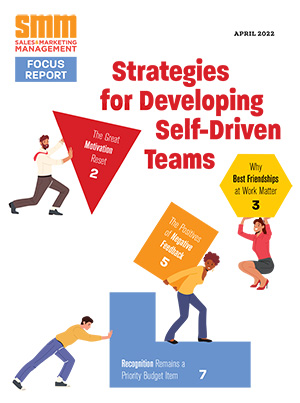
Getting B2B marketers to think of content marketing as a useful tool with real ROI has been a challenge, but some of those who work and monitor the content marketing world are beginning to sense a significant shift.
“There’s a good chance we will look back at 2014 as the year brands first seriously plunged into the content marketing waters,” states Jordan Teicher, a New York-based journalist who writes on technology and sports for publications including The Wall Street Journal, Wired and Slate. “Terms like ‘native content,’ ‘brand publishing,’ and ‘owned media’ are set to evolve from buzzwords into crucial staples of marketing success.”
No one doubts that content has captured the imagination of a lot of marketing departments, adds Ragini Bhalla, director of public relations and content at G/O Digital, the digital division of Gannett. But the trick becomes how businesses approach and distinguish between company-centric content and customer-centric content.
Company-centric content includes sales collateral, one-pagers, product videos, product FAQ sheets, pitch decks and newsletters. “These types of content should not be ignored, but they also have a very clear purpose — to sell, sell, sell. That’s absolutely right and the way it should be,” Bhalla says. “At the end of the day, sales matter, and if you don’t have content that supports sales goals, you’re going to have a lot of trouble.”
Customer-centric content – blogs, research studies, industry benchmark reports, campaign trend reports, infographics, case studies, webinars, boot camps, editorial bylines, speaking engagements, podcasts, etc. — should not be about how “totally awesome” your company and your products are.
Both types of content belong at the table. “But mistaking one for the other is where a lot of B2B marketers — especially in the C-suite — fall into troubled waters,” Bhalla commented in a recent LinkedIn post. As a recent study from the Economist Group and Peppercomm found, it’s not uncommon for B2B marketers to insert sales pitches into their customer-centric content. Bhalla says she was particularly alarmed by two statistics:
• Thirty-two percent of the surveyed B2B marketers said their content focuses on their own company’s story.
• Only 27 percent indicated their content focuses on their prospects’ story.
“The worst crime against content is when B2B companies try to awkwardly squeeze in self-serving messages and sales pitches into customer-centric content,” Bhalla says. Customer-centric content is about “uncovering new insights and backing it up with data that gives your customers a deeper look into what and who they care about — their customers.It digs further into the state of the industry and businesses within that landscape: their unique challenges, their advantages, and the role different forms of marketing play in how they reach and engage with their customers. And it most certainly looks for lessons that can be learned from campaigns that have run — or will run — in order to help the industry grow and evolve.”
Unlike company-centric content, customer-centric content is going to play a less direct and slower form of influence over a prospective buyer. “If you’re doing it right, customer-centric content uses storytelling to compel someone to touch it (be it physically or online), then dig deeper and read it, and find enough value in it to consider buying or hiring. And if all goes well, they’ll eventually use that content to get the C-suite to sign off on it,” Bhalla says.



